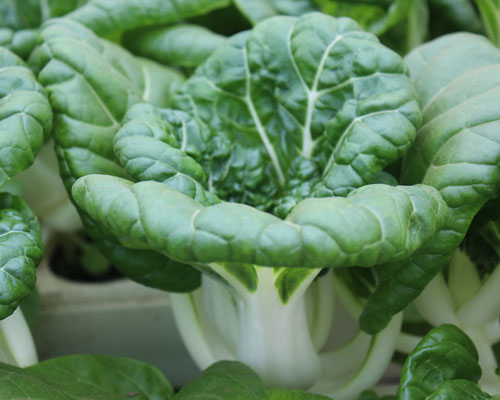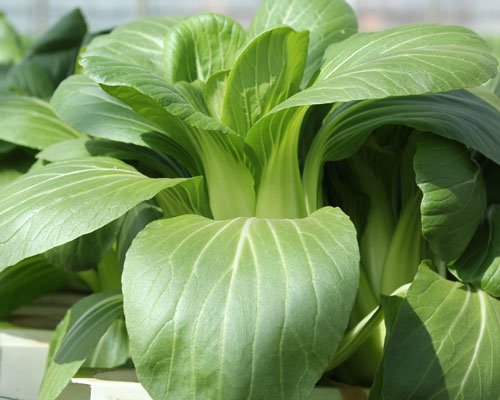Pak Choi (Brassica chinensis) is a member of the Mustard family. Pak Choi and its variations are amongst the most popular vegetables used in Chinese cooking in Hong Kong and parts of Southern China, is now commonplace in European cooking.
Also commonly known as 'bok choy', the broad green leaves, which taper to white stalks, are crisp and crunchy. The Cantonese name is bok choy or pak choi and the Mandarin name is bai cai. The name means white vegetable in Chinese.
Pak Choi leaves are soft and succulent, with crunchy white or green stalks and young sweet flavoured flower shoots. The whole plant is edible. The slight mustard flavor of Pak Choi makes it a delightful addition to stir-fries, soups, noodle and meat dishes, and salads, if the young leaves are used. In China, the coarser leaves are often pickled.
Bok Choy, Bai Cai (Bai Tsai), Cai Trang, Pe Tsai and Pechey.
Asian cooks use the entire plant at many stages of development. It can also be dried by dipping the leaves in boiling water and hanging them out to dry in the sun for several days. Drying enables this highly perishable vegetable to be stored for winter months.
Popular dishes: Sweet soy fried noodles (pad sieu), Pak Choi Soup and Chicken Dumplings, Soup noodles with vegetables, Pak Choi Salad, Char Siu Pork on Steamed Pak Choy, Sichuan Pepper Pork with Pak Choi, Stir Fry Rice with Pak Choi and Pak choi stir-fry.
UK March-December | SPAIN December-March


